Who can be a candidate for ACL and PCL surgery in Iran?
All individuals with a torn anterior cruciate ligament are candidates for ACL surgery if they don’t get the desired results from non-surgical alternatives. Individuals should visit an orthopedist after a knee injury, and the orthopedist will evaluate their knee and the severity of the ligament tear. The orthopedist may ask that patients undergo certain tests. If your ligament is not completely torn, the orthopedist may prescribe medications and physiotherapy.
The ideal candidates for an ACL surgery are:
1.Children whose growth plates are closed.
2.Individuals who have symptoms of instability like knee pain and knee buckling during physical activities.
3.Active adults.
4.Individuals who tried non-surgical ACL treatments like medications or physical therapy but didn’t get results.
You can be a candidate for PCL surgery if you have:
1.Grade III or grade IV PCL injuries, mean that the knee is unstable or the ligament is completely torn.
2.Serious instability of the knee, which affects the ability to perform everyday activities or sports.
3.Multiple damages to the knee plus PCL tears, like injury to other ligaments, bone, or cartilage.
4.A pulling of the ligament, that causes pain and decreased range of motion.
5.Limited mobility due to the injury, which prevents them from walking, jumping, or running normally.
Cost of ACL and PCL Surgery in Iran
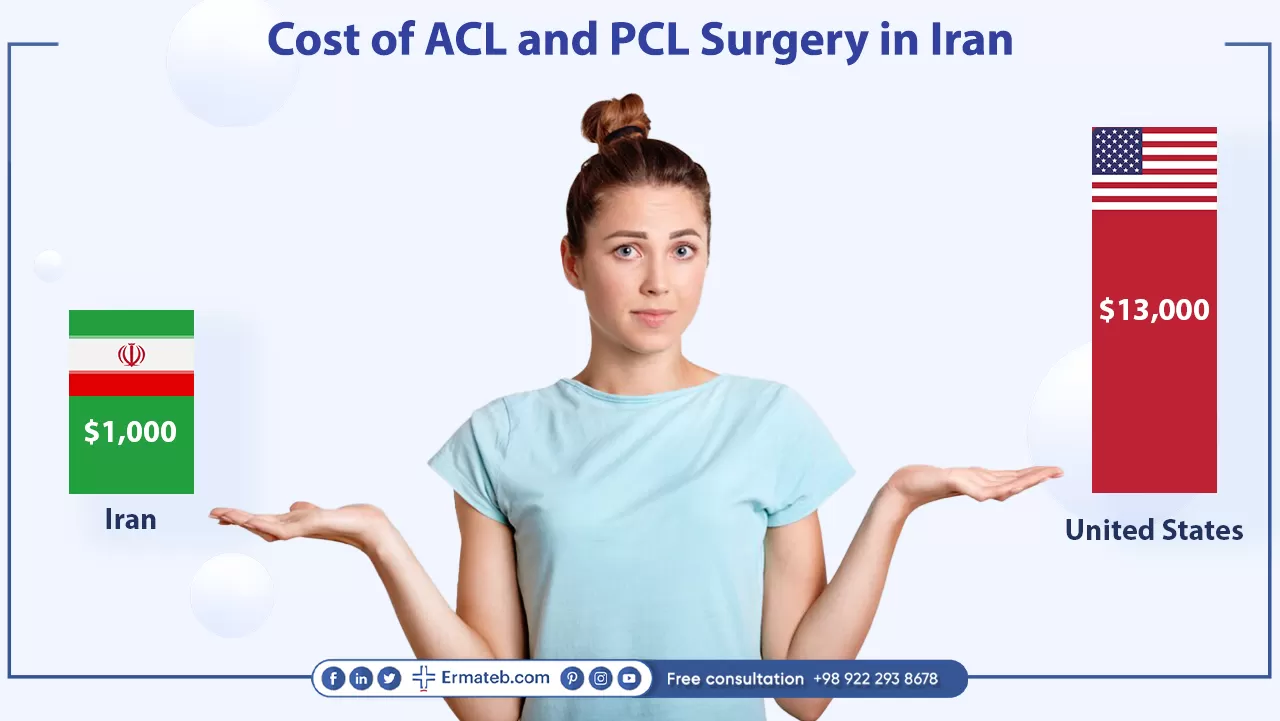
For some patients, usually, the cost of the surgery is an issue. People may not be able to undergo an ACL or PCL surgery in their homeland due to the high prices of these surgeries. Therefore, many people may decide to get their treatments overseas.
Depending on the hospital, the severity of the knee sprain, and the expertise of the surgeon, the cost of an ACL operation in Iran is between $ 1,000 to $ 3,000. This cost includes all related expenses such as hospital fees, anesthesia, etc. The price of surgery for PCL (posterior cruciate ligament) in Iran is usually within the same range.
Iran offers its medical services at a reasonable price compared to other countries. Iran is an ideal option for international patients who are looking for an affordable solution to their orthopedic procedures like knee replacement surgery or shoulder replacmnet surgery. For ACL surgery in the United States, a patient has to pay at least $13000, and that is not covered by insurance, and even doesn’t include the price of anesthesia or any other expenses such as hospital expenses.
The low prices here are because of the low currency of Iran against other countries and are not related to the quality of these medical procedures. Therefore, patients can get their ACL and PCL surgery in Iran at a high quality while paying low. Ermateb is a medical tourism facilitator in Iran. To get information about the exact cost of these surgeries or other things just contact Ermateb now via WhatsApp.
Types of ACL and PCL surgery in Iran
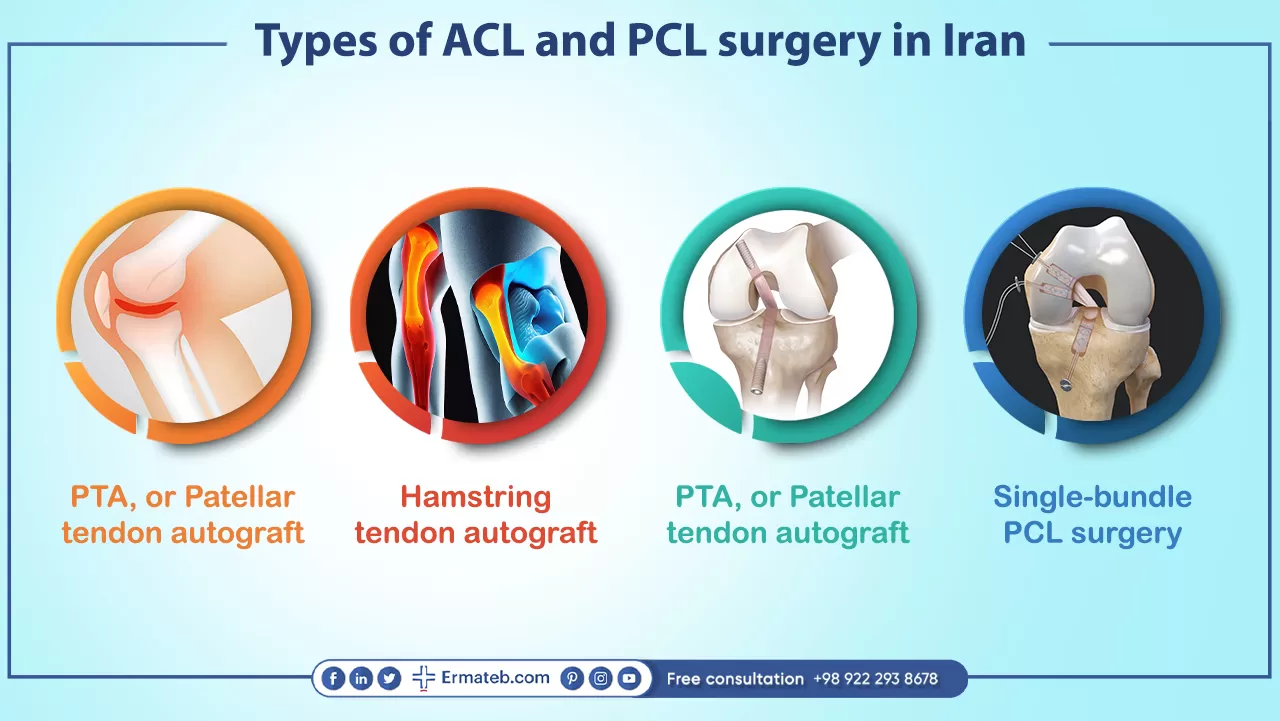
There are various types of ACL operations. Some of the common types are:
1.PTA, or Patellar tendon autograft:
This procedure includes using a part of the person’s patellar tendon, that connects the kneecap to the shinbone, along with bone plugs from the kneecap and shinbone. This type of operation is considered the gold standard for ACL surgery and is usually used for high-performance athletes. However, it can cause more pain and stiffness in the front of the knee following the surgery.
2.Hamstring tendon autograft:
This surgery includes using a part of the person’s hamstring tendon, which is located on the back of the thigh, to replace the ACL. This type of operation can cause less pain and scarring compared to PTA and may result in a faster recovery. However, it can also result in weaker hamstring muscles and less stability in the person’s knee.
3.Quadriceps tendon autograft:
This procedure includes using a part of the person’s own quadriceps tendon, that connects the thigh muscle to the kneecap, along with a bone plug from the kneecap. This type of operation may be used for individuals who have failed previous ACL surgery or who are heavier or taller than average. However, it can also cause more pain and swelling in the front of the knee.
4.Allograft:
This procedure includes using a graft tissue. This type of operation may avoid the need to harvest tissue from the person’s own body and may decrease the operative time and recovery. However, it may have a higher risk of rejection, infection, or failure compared to autografts.
Some of the common types of PCL surgery are:
1. Single-bundle PCL surgery:
It is the most common type of PCL operation, where one graft is used to replace the torn PCL. The graft can be an autograft (a piece of tissue from elsewhere on the patient’s body, like the patellar tendon) or an allograft (a piece of tissue from a cadaver or donor).
2. Double-bundle PCL surgery:
It is a newer type of PCL operation. In this procedure, two grafts are used to replace the two bundles of the PCL. The grafts can be either allografts or autografts. This procedure may provide better function and stability of the knee joint compared to single-bundle PCL surgery, but it’s more complex and needs more surgical skill.
3. Combined ACL-PCL surgery:
It is a type of PCL operation where both the ACL and PCL are reconstructed at the same time. It is performed when both ligaments are torn, which often occurs in knee dislocations or severe damage. The grafts can be either allografts or autografts. This procedure restores both front and back stability of the knee joint, however, it has a longer recovery period and a higher risk of side effects compared to single-ligament surgery.
How does the ACL and PCL tear happen?
Athletes usually get ACL injuries when they stop and quickly change directions while they’re running. People who play football, soccer, tennis, volleyball, or basketball, or individuals who do gymnastics may twist their knees by mistake when they compete. The person’s speed combined with the way that they twist or turn their knee makes it likely that the person will stretch or tear their ACL. Female athletes have a higher incidence of ACL injury compared to male athletes in some sports. It has been proposed that this is because of differences in muscular strength, physical conditioning, and neuromuscular control. The ACL, or anterior cruciate ligament can be injured in many ways:
1.Changing direction rapidly
2.Slowing down while running
3.Stopping suddenly
4.Direct contact or collision, like a football tackle
5.Landing from a jump incorrectly
ACL Symptoms:
1.hearing a “popping” noise and feeling your knee give out from under you.
2.Pain with swelling. the pain and swelling may resolve on its own. However, if you resume sports, your knee will be unstable and there will be a risk of causing further damage to the cushioning cartilage (meniscus) of your knee.
3.Discomfort while walking
4.Loss of full range of motion
5.Tenderness along the joint line
A direct blow to the front of the knee is the most common cause of a PCL tear, like when the knee hits the dashboard in a car accident. This is also called a dashboard injury. A PCL tear can be complete or partial. It depends on how much of the ligament is damaged.
PCL symptoms:
1.Pain in the back of the knee, especially when straightening the leg or bending.
2.Stiffness and swelling of the knee, which occurs within hours or days of the injury.
3.Difficulty bearing weight on the affected leg, which causes a limp or difficulty walking.
4.Knee instability and giving way. It means that the knee feels like it’s about to buckle or collapse during some movements.
5.decreased range of function and motion of the knee, affecting sports performance and everyday activities.
Before the operation
Patients should make sure they understand the advantages and disadvantages of the operation and ask any questions they have about this procedure. They better talk with a patient who has previously undergone this operation. Patients should exercise and stretch the knee before the operation. It will help the patient strengthen the muscles around the knee and improve their range of motion. The doctor or physical therapist will recommend specific exercises and stretches.
The patient should Ask for time off work and arrange for someone to help them at home following the operation. They will need some weeks to recover from the surgery, and they may need crutches or a brace to walk. The patient will also need someone to drive them home since the anesthetic and pain medications will make the patient drowsy. Patients must follow the pre-operative instructions given by the doctor, which include fasting before the procedure, stopping certain medications, and refraining from alcohol and tobacco. Patients should also inform the doctor if they get sick or have any infections before the surgery.
The patient should practice with crutches before the operation. Since they may need crutches after the procedure. This will help the patient get used to them and prevent injuries or falls. Dress comfortably on the day of the operation. It is better to wear loose pants or other clothing that will fit comfortably over the knee bandage or brace when leaving the hospital. Relax before the surgery and keep a good frame of mind. This can help ease any anxiety patients have about undergoing the operation. Distractions like watching television, reading, chatting with visitors, or talking on the telephone also may help.
During the operation
ACL and PCL surgical procedures are performed using minimally invasive arthroscopic techniques, meaning that instruments and small incisions are used to access the knee joint. A camera is inserted through one of the incisions that are made to provide a clear view of the inside of the patient’s knee. The surgeon then eliminates the torn ligaments and replaces them with grafts from either the patellar tendon, the hamstring tendons, or a deceased donor. The grafts are fixed to the bones with screws through small tunnels drilled into the femur and tibia.
The technique and type of graft used depend on factors like the patient’s age, the surgeon’s preference, and whether there are other injuries in the knee. There are various techniques for performing ACL and PCL reconstruction, like single-bundle or double-bundle reconstruction. These techniques are different in how many grafts are used and where they’re placed in the knee. Some research suggests that the double-bundle procedure can enhance the stability of the knee joint and provide better knee functionality.
The operation usually takes 1-2 hours and is done under general or local anesthesia. After that, the patient is taken to the recovery room and may be discharged later that day or can be discharged the next day. The recovery period for ACL and PCL surgical procedures is different depending on the individual and the type of graft used.
Advantages and disadvantages of ACL and PCL surgery in Iran
Some of the pros and cons of ACL and PCL surgery are:
pros:
1.ACL and PCL operation can improve the stability of the person’s knee and prevent it from giving way during some movements. This can decrease the risk of further knee damage, like cartilage wear or meniscus tears.
2.ACL and PCL operations can relieve pain and swelling in the person’s knee caused by torn ligaments.
3.ACL and PCL surgical procedures can restore the normal range of motion and function in the person’s knee, allowing them to resume their everyday activities and sports.
4.ACL and PCL surgical procedures have a high success rate, with 80% to 90% of patients enjoying long-term knee health following the surgery.
cons:
1.ACL and PCL operations have some risks and side effects, like bleeding, infection, blood clots, nerve damage, or graft failure. These may need additional treatment or operation.
2.ACL and PCL surgical procedures may cause pain and weakness in the person’s knee, especially if they have a patellar tendon graft. They may also have pain behind their kneecap or when kneeling or crouching.
3.ACL and PCL operation may cause stiffness or numbness in the person’s knee, which can limit their flexibility and mobility. This can be because of poor healing of the graft, scar tissue formation, or graft stretching.
Risks and complications
ACL and PCL operations can improve the function and stability of the knee, but they also carry some risks and side effects. Some of them are:
1.Infection or bleeding in the surgical site: This can cause swelling, pain, redness, and fever. Antibiotics or additional operations may be needed to treat the bleeding or infection. The risk of bleeding or infection is small, but it can be prevented by following the instructions.
2.Pain and weakness in the knee: This can affect the ability to perform certain sports or activities. Pain can be more likely when the patellar tendon is used as a graft. Pain can also occur behind the kneecap or when kneeling or crouching. Pain medications and physical therapy can help manage the pain and weakness.
3.Numbness or stiffness of the knee: This can limit the range of flexibility and motion of the knee. It can be caused by nerve damage, scar tissue formation, or poor healing of the graft. Exercise and physical therapy can help improve mobility and prevent stiffness.
4.Poor healing or failure of the graft: The graft used to replace the torn ligament may not heal or may even fail after returning to sport. It can cause the knee to be unstable again and raise the risk of re-injury or arthritis. Another operation may be needed to revise or replace the graft. There is a low risk of graft failure, depending on factors like age, the type and technique of the graft, and other injuries in the knee.
5.Blood clots in the leg: This can block the blood flow and cause pain, swelling, and tenderness in the thigh or calf. It can be a serious condition that can cause pulmonary embolism (a blood clot in the lungs) which causes breathing issues or chest pain. Medication or surgical procedures may be needed to dissolve or eliminate the blood clot.
There may be other rare or unforeseen complications that can happen. Patients need to discuss with their surgeon about the side effects and risks of ACL and PCL surgical procedures before undergoing these surgeries.
The risks of not having an ACL procedure depend on many factors, like the severity of the injury, the person’s age, the person’s activity level, and personal preference. However, the possible risks are:
1.Knee instability and giving way: Without operation, the person’s knee may feel unstable and give way during some movements, especially when turning or pivoting quickly. It can affect the ability to perform routine activities or sports and raise the risk of further knee damage.
2.Knee pain and swelling: Without operation, the person’s knee may be more prone to swelling and pain caused by the torn ligament or other damages in the knee joint. It can limit mobility and function, and decrease the person’s quality of life.
3.Knee arthritis and cartilage wear: Without operation, the person’s knee may develop early arthritis and cartilage wear because of abnormal joint mechanics and increased stress on the joint surfaces. It causes stiffness, chronic pain, and deformity in the knee, and may need more extensive knee surgery in the future.
Recovery process of ACL and PCL surgery
The recovery period of ACL and PCL surgery in Iran may be different depending on the severity and type of the injury, and the individual factors of the patient, or the surgical technique used.
In the first few days, you should rest the knee and elevate it to decrease pain and swelling. You should also use pain medications, ice packs, and a knee brace as prescribed by your surgeon. You should start doing gentle exercises to prevent stiffness in the knee and regain range of motion.
In the first few weeks, you should continue doing exercises to improve range of motion, stability, and strength in the knee. You should also see a physiotherapist who will guide you through a rehabilitation program that progresses from simple to complex activities. You may also need to use crutches or a brace to walk for some time.
In the first few months, you should gradually raise the intensity and duration of exercises and activities and also follow the advice of the physiotherapist and surgeon. You should refrain from any activities that involve pivoting, twisting, or jumping until cleared by the surgeon. You should also refrain from contact sports or high-impact sports until at least 6 months following the surgery.
In the first year, you should be able to resume normal activities and sports after 6 to 9 months, depending on your healing process and rehabilitation program. You should continue doing exercises to maintain flexibility, strength, and function in the knee. You should also follow up with your surgeon regularly to monitor your progress and check for any complications.
It is important for patients to follow the instructions given by the surgeon and physiotherapist, and also report any signs of problems or complications as soon as possible.As you may know, Iran is popular for its both medical and cosmetic surgeries. Many reasons have turned this country into one of the ideal destinations for medical services for international patients. Every year, people all around the world travel to get their various treatments, including ACL and PCL surgery in Iran.
One of the reasons is the reasonable prices of these services. Patients may not be able to get their treatment in their own country due to the high price of the treatment, and in some countries, the expenses may not be covered by insurance. Therefore, patients come to Iran to have high-quality surgery while paying low and saving an amount of money at the same time.
We can mention Iranian doctors and surgeons as the second reason for the popularity of Iran. Iranian surgeons are among the best surgeons in the world, they have studied at the best universities, and also, they have performed many successful ACL and PCL surgeries in Iran.
In this country, patients don’t have to wait to get their treatment since there are no waiting lists, and alongside their operation, they can enjoy the cultural and historical attractions of the country. But how can patients arrange their treatments in Iran?
Ermateb is a medical tourism facilitator located at the Iran University of Medical Sciences. Patients can arrange their surgery and contact us via WhatsApp, or they can fill out the online form on our website.
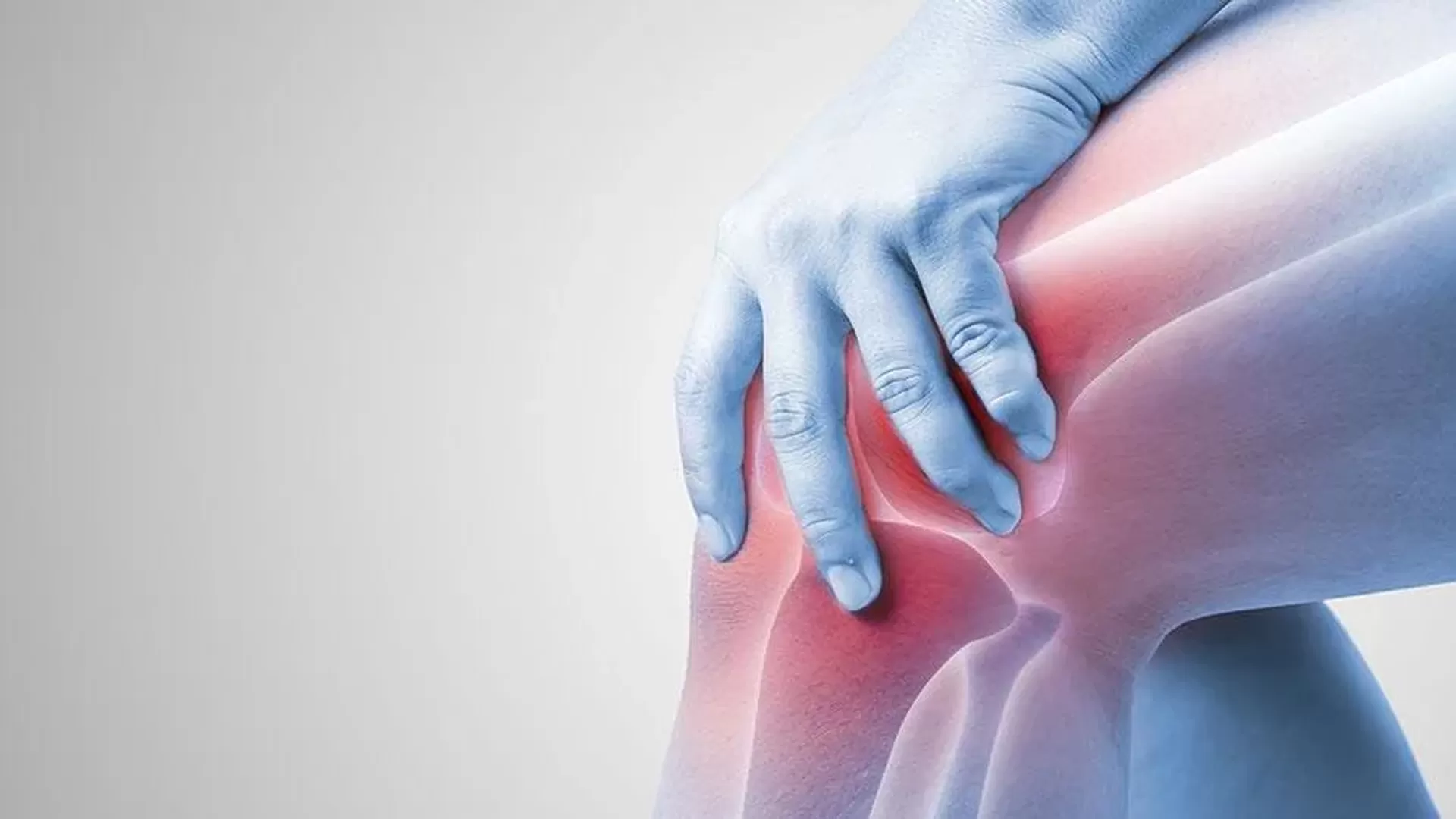

 Arabic
Arabic
 German
German
 Persian (Farsi)
Persian (Farsi)
 Russian
Russian
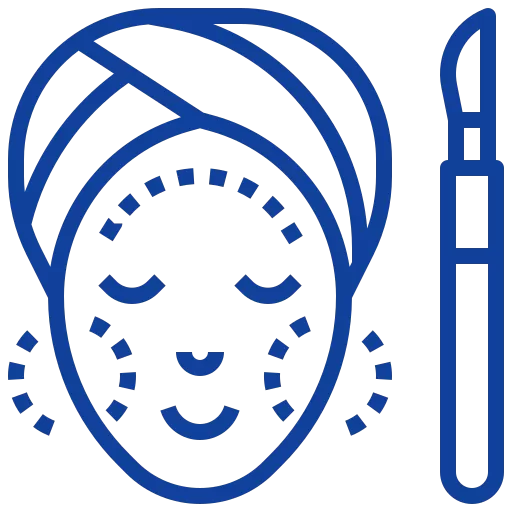 Beauty
Beauty



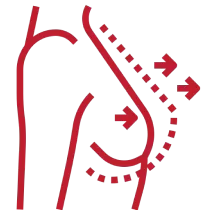


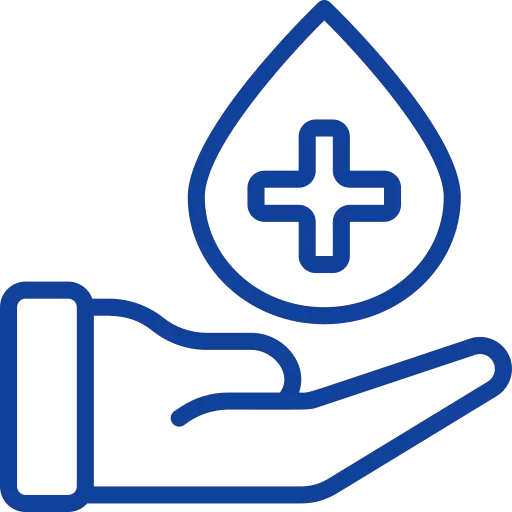 Medical
Medical



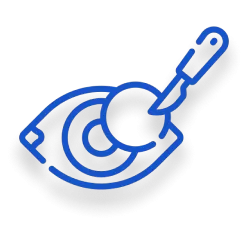
 Hotels
Hotels
 Hospitals
Hospitals































![Frequently asked question about [name]](/v2tem/images/pages/service/faq-image.webp)
